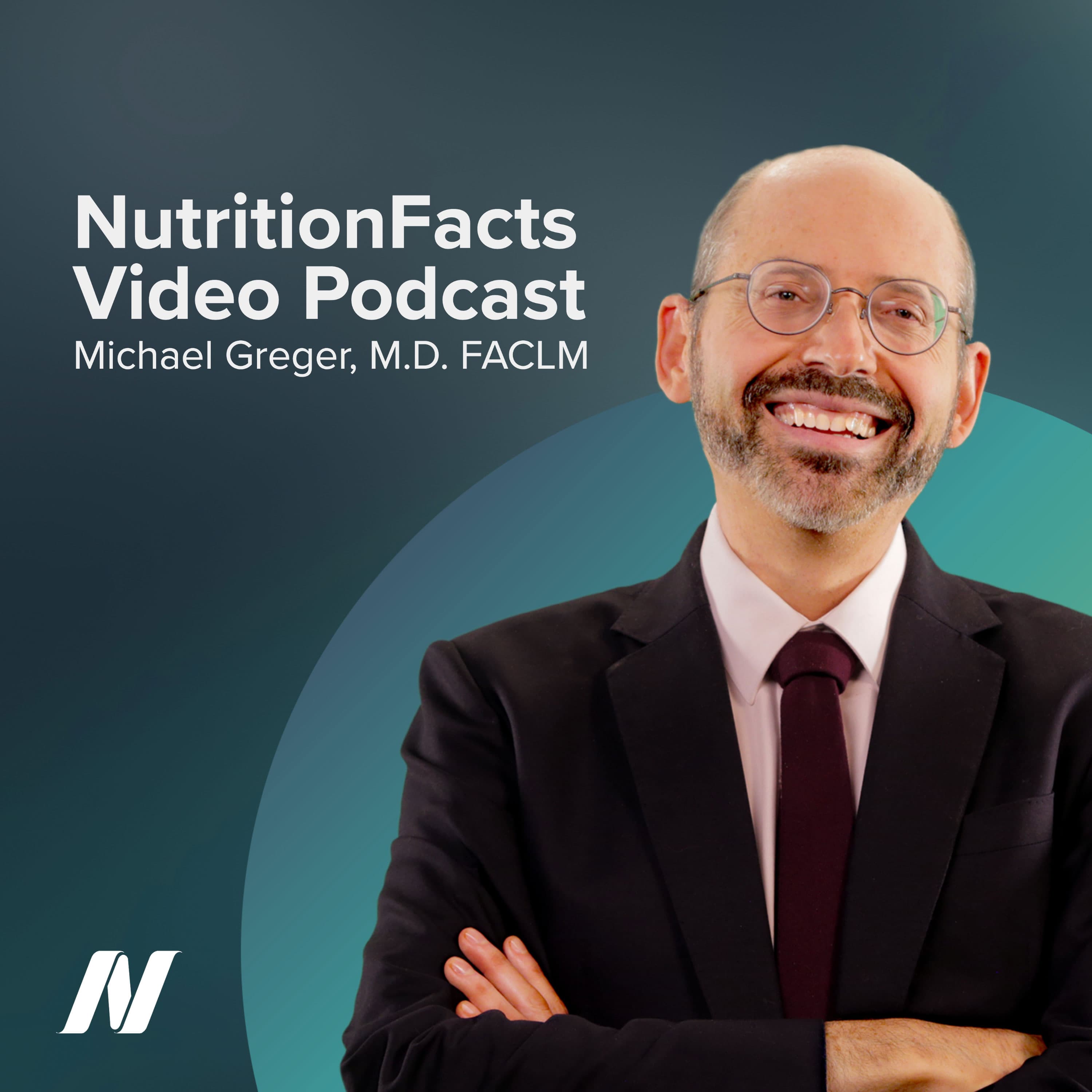Risk of developing cataracts was compared in meat-eaters, fish-eaters, vegetarians, and vegans.
Preventing Cataracts with Diet
The leading cause of blindness and vision loss is cataracts, one of the most common surgeries performed today. We know smoking can increase risk; long-term radiation exposure—what about diet? A study of more than 25,000 people with a wide range of diets was recently published. They compared what they called “high” meat-eaters to “moderate” meat-eaters to “low” meat-eaters, versus those who “ate fish but no other meat,” versus those eating “vegetarian,” versus those eating “vegan.”
The researchers went out of their way to choose health-conscious subjects, so they could factor out smoking, exercise, and other non-diet variables. And so the so-called “high” meat-consuming group—100 grams a day. That’s like one serving in one meal a day. In the U.S., we average about 330 grams a day. So it’s like reverse Starbucks labeling. You know how their small is a “tall”? Well, here, their “high” meat group is really quite low by American standards. Yet they still found a highly significant trend. Who do you think had the lowest risk of cataracts?
Compared with the “high” meat group, cutting back on meat cuts down your risk about 15%. Just do fish, you’re down 21%. No fish, 30% drop in risk. And then, no eggs and dairy for the full 40% drop in risk. Overall, compared with meat-eaters who consumed 100 grams of meat and meat products a day, fish-eaters, vegetarians, and vegans had approximately 20%, 30%, and 40% lower risk of cataracts, respectively.
It’s like with the diabetes risk; there appears to be a stepwise reduction, “a progressive decrease in risk in parallel with [the decrease in] the amount of meat and other animal products in the diet.”
To see any graphs, charts, graphics, images, and quotes to which Dr. Greger may be referring, watch the above video. This is just an approximation of the audio contributed by veganmontreal.
Please consider volunteering to help out on the site.
Images thanks to Rakesh Ahuja, MD and the U.S. Navy via Wikimedia Commons, and the National Eye Institute.
The leading cause of blindness and vision loss is cataracts, one of the most common surgeries performed today. We know smoking can increase risk; long-term radiation exposure—what about diet? A study of more than 25,000 people with a wide range of diets was recently published. They compared what they called “high” meat-eaters to “moderate” meat-eaters to “low” meat-eaters, versus those who “ate fish but no other meat,” versus those eating “vegetarian,” versus those eating “vegan.”
The researchers went out of their way to choose health-conscious subjects, so they could factor out smoking, exercise, and other non-diet variables. And so the so-called “high” meat-consuming group—100 grams a day. That’s like one serving in one meal a day. In the U.S., we average about 330 grams a day. So it’s like reverse Starbucks labeling. You know how their small is a “tall”? Well, here, their “high” meat group is really quite low by American standards. Yet they still found a highly significant trend. Who do you think had the lowest risk of cataracts?
Compared with the “high” meat group, cutting back on meat cuts down your risk about 15%. Just do fish, you’re down 21%. No fish, 30% drop in risk. And then, no eggs and dairy for the full 40% drop in risk. Overall, compared with meat-eaters who consumed 100 grams of meat and meat products a day, fish-eaters, vegetarians, and vegans had approximately 20%, 30%, and 40% lower risk of cataracts, respectively.
It’s like with the diabetes risk; there appears to be a stepwise reduction, “a progressive decrease in risk in parallel with [the decrease in] the amount of meat and other animal products in the diet.”
To see any graphs, charts, graphics, images, and quotes to which Dr. Greger may be referring, watch the above video. This is just an approximation of the audio contributed by veganmontreal.
Please consider volunteering to help out on the site.
Images thanks to Rakesh Ahuja, MD and the U.S. Navy via Wikimedia Commons, and the National Eye Institute.
Comparte "Preventing Cataracts with Diet"
Puedes compartir este material en la red o impreso bajo nuestra licencia Creative Commons. Deberás atribuir el artículo a NutritionFacts.org y agregar la liga a nuestro sitio en tu publicación
Si se realizan cambios en el texto o video original, se debe indicar, razonablemente, lo que ha cambiado en relación con el artículo o el video.
No se puede usar nuestro contenido para propósitos comerciales.
No puede aplicar términos legales o medidas tecnológicas que restrinjan a otros a hacer cualquier cosa permitida aquí.
Si tienes alguna duda, por favor Contáctanos
Preventing Cataracts with Diet
LicenciaCreative Commons Attribution-NonCommercial 4.0 International (CC BY-NC 4.0)
URLNota del Doctor
The concentration of advanced glycation end-products in animal-based foods may help explain this finding; see my video Glycotoxins. In Prevent Glaucoma and See 27 Miles Farther, I covered the second leading cause of blindness—glaucoma, and I previously covered two other leading causes of vision loss in Preventing Macular Degeneration with Diet, where I also touched on diabetic retinopathy. Check out my other videos on plant-based diets.
For further context, check out my associated blog posts: Preserving Vision Through Diet; Plant-Based Diets for Metabolic Syndrome; and Plant-Based Diets for Fibromyalgia.
Échale un vistazo a la página de información sobre los recursos traducidos.
 Video anterior
Video anterior Siguiente video
Siguiente video